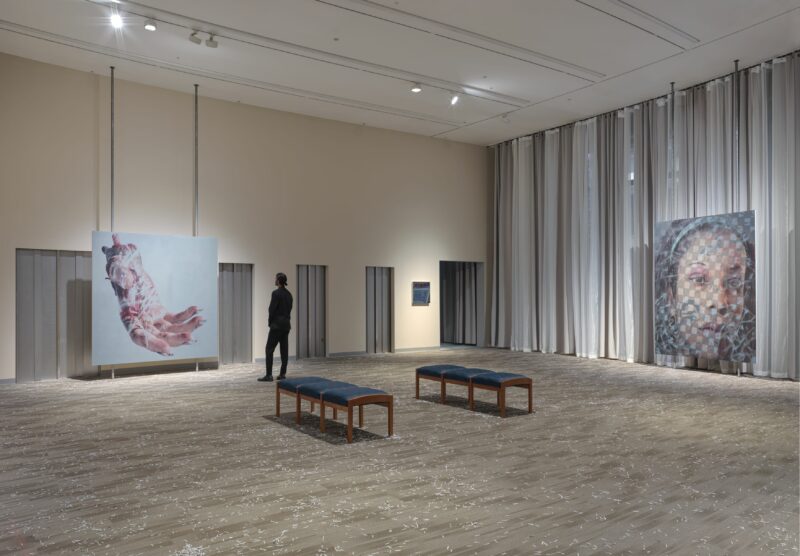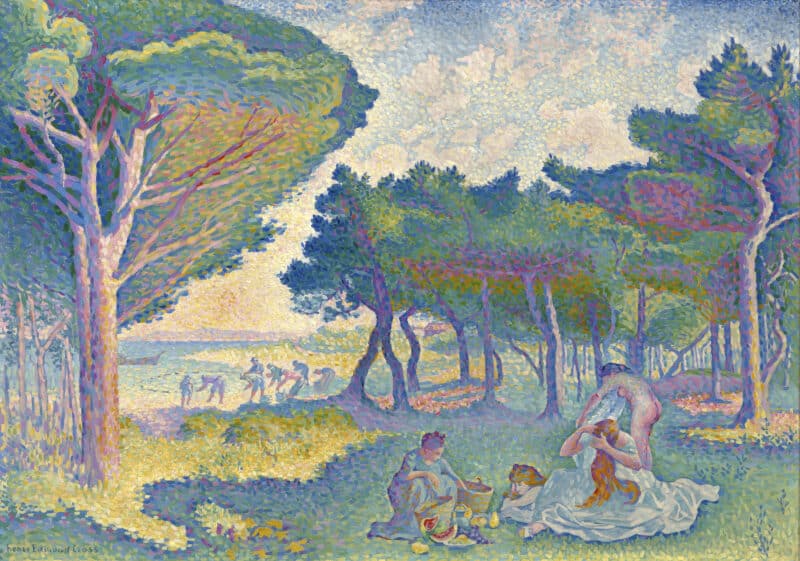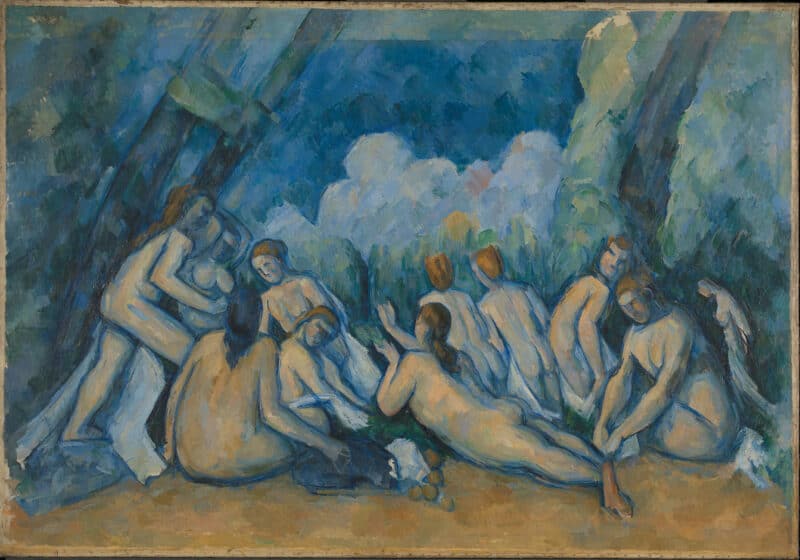
Elmgreen and Dragset’s rendering of Van Gogh’s Ear. Photograph: Courtesy the artists and Public Art Fund, NY
Yesterday was Vincent Van Gogh’s birthday and the Dutch painter, who was born in 1853, is making a comeback (of sorts) with a new biopic that hits cinemas this fall. He is also the subject of an unlikely public art piece entitled Van Gogh’s Ear. The Berlin art duo Elmgreen and Dragset created the ear-shaped swimming pool that opens on 13 April in New York City.
“It’s a piece about the memory of Van Gogh,” said Danish artist Michael Elmgreen on the phone from Berlin. “It’s not an exact proportion to his ear, but it resembles an ear.”
Probably the most well-worn art rumour is that Van Gogh cut off his earlobe in 1888 in France. Some historians say he did it in response to his brother’s engagement, others think Paul Gauguin did it during a fight.
“Nobody really knows how that story came about, if it’s true, if it’s proven,” said Norwegian artist Ingar Dragset. “Maybe Gauguin and Van Gogh invented the story together? It’s a fascinating thing.”
What’s also fascinating is how Elmgreen and Dragset commemorate the memory of a world-renowned post-impressionist painter with a retro-looking domestic swimming pool. “We have an ongoing fetish with swimming pools,” said Elmgreen, who has been working with Dragset since 1995.
Their first sculpture was a diving board that hangs out of a window, which is now on permanent display at the Louisiana Museum in Denmark. At the Venice Biennale in 2009, they had a wax figure floating in a pool for their eerie piece, Death of a Collector. And at the Yokohama Triennale in Japan in 2008, they showed Catch Me Should I Fall, a boy in a pair of Speedos standing on a tall diving board before a shallow pool.
This Public Art Fund piece at the Rockefeller Center, which crowns the Fifth Avenue entrance to Channel Gardens, was inspired by west coast roadside display pools. “The pool has the ambience of California, the plenty-of-space good life from the 1950s and 1960s,” said Elmgreen.
“And that is everything the Rockefeller is not, which is busy, east coast, dense and urban. We thought it would be interesting to put that symbol of the good, middle-class leisure life out in that environment.”
It ties into the shrinking American middle class, which divides the rich and poor. In 1971, 61% of the population was middle class, in 2015, it was 50%. Rich families almost tripled their wealth from 1983 to 2007 and poverty-stricken Americans have grown from 16% to 20% over the past 44 years.
“This piece is a nostalgic image of what would be a good life in former times,” said Elmgreen. The so called “good life” is in question with Van Gogh, who died poor and relatively unknown at age 37. The Starry Night painter spent most of his monthly budget on art supplies and struggled with mental illness. “Van Gogh lived in misery and in despair,” said Elmgreen.
After he died, the artist was recognised thanks to the initial help of his sister-in-law Johanna van Gogh. Today, he is remembered as the greatest Dutch artist after Rembrandt.
Taking it back to European roots, their pool doesn’t come from California, it comes from Poland. It was handcrafted at a fiberglass factory in the industrial town of Slupsk, where a team of 20 built the four-and-a-half-ton pool over the past six months.
“It is a costly production,” said Elmgreen, who declined to give exact costs.
The pool drove on the back of flatbed truck with police escorting it to a harbour in Belgium, where it was shipped by boat to New York City.
Even after the lengthy shipping process, the artists are not worried about vandalism, as a security guard will be manning the art at all times. That is a far different story than Prada Marfa, their famed fake Prada boutique set in the middle of the Texan desert, which has been vandalised dozens of times.
“People have shot their guns at it, damaged it and put graffiti on it,” Elmgreen said. “It’s part of being in the public that it will have a rough life.”
The fascination with west coast pools draws from the contrast to Elmgreen and Dragset’s own upbringing – they both hail from chilly Scandinavia. “Nobody had a pool up north in Norway,” said Dragset, drily. “It would have been very absurd to have a pool.”
True, but with summer approaching, one has to wonder why they wouldn’t just fill the pool with water and let New Yorkers cool down? After all, this pool is Manhattan’s 35th outdoor swimming pool (albeit an empty one). Why can’t anyone swim in this sculpture? Dragset lets out a hearty laugh. “I don’t know,” he said. “Now I’m starting to think about it.”
guardian.co.uk © Guardian News & Media Limited 2010
Published via the Guardian News Feed plugin for WordPress.







